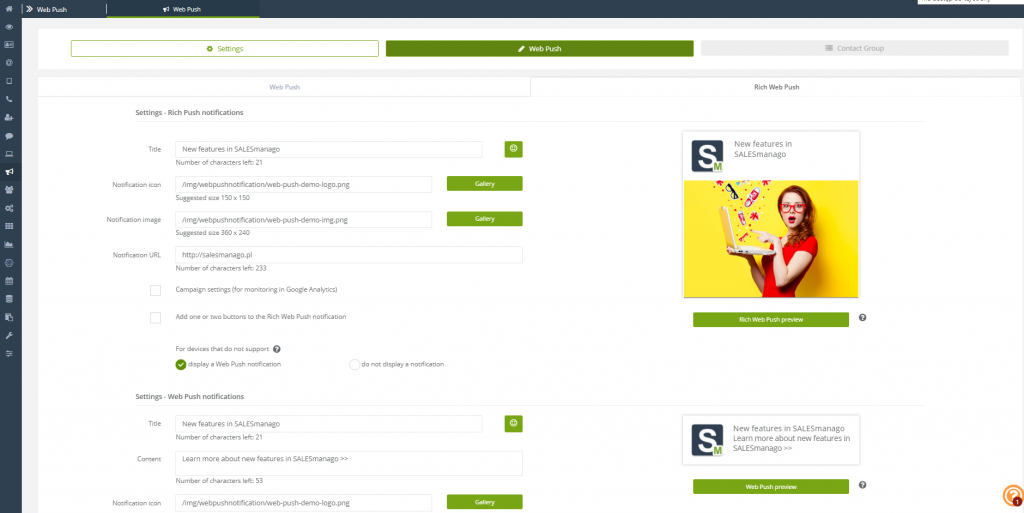
We have conducted comprehensive research comparing the impact on revenue generated from different product recommendation types, including 1-to-1 and AI-based algorithms. From the compared recommendation delivery methods, personalized web pushes proved to be the most effective, generating 20% higher revenues than dynamic emails.
The research on the revenue generated by product recommendations
In our study, we took a closer look at the campaigns conducted by the largest European eCommerce brands which use SALESmanago and wanted to determine which types of recommendations generate the highest revenue. We analyzed the impact on sales from AI and 1-to-1 algorithms and compared different recommendation delivery channels – bulk and automated web push notifications and emails. We already expected the automated campaigns to outperform bulk massaging in effectiveness, however using the universal RPM indicator (revenue from click per million earned) we came to surprising results.
Web push notifications outperform dynamic 1-to-1 emails
The study showed us that automated, personalized web push notifications are the most effective way of delivering product recommendations. The exact methods and tactics used by our clients, representing a wide range of different industries from fashion to pharmacy, varied greatly, but web push notifications on average generated 20% greater revenue from a single click in recommendation than automated, dynamic emails. This is significant because the dynamic emails already proved to achieve 600% higher conversion rates than standard email campaigns and they have de facto taken over web push notifications as a method of delivering product recommendations.
Personalization is the key to success
Both types of messages, emails and web push notifications, can be personalized in SALESmanago with 1-to-1 algorithms, meaning they can contain information based on the behavioral data of an identified user, or they can be adjusted based on AI recommendations, showing the customers products which other users found attractive. This way your message is perfectly tailored to the specific customer, whether they’re an active user of your service, or not.
Additionally, using automation, you can define the amount of time in which the message should be sent to the customer after their specific action. For instance, when the user browses products in your store, you can send them the message with recommendations an hour after they leave the store, but when they buy a product, you can send the message a week after, with a cross-selling offer.
Sending the message at the right time with the right product is vital in achieving success, but what if the message remains unnoticed? In contrast to emails, web push notifications cannot be lost within the depths of the inbox, they are displayed when the customer is in front of their device, meaning that they can’t miss them easily. This is the key factor behind the higher effectiveness of personalized web-push notifications in comparison to automated emails – unlike them, they are bound to be seen.
The importance of creating appropriate web push sign-up forms
To fully utilize the potential offered by dynamic web push notifications you have to
be able to send them to the reasonable amount of your contacts. High conversion is not enough, if the volume of data is really low – you won’t feel the difference in revenue if you send notifications to 15 users a day. Using web push notifications require a contact to agree on receiving them from you in their internet web browser, and collecting consents is not a one-time quick task.
The consent form can be displayed to every visitor on your site at the entrance, but the average opt-in rate for push notifications is ~5%. To get more consents you should again utilize the capabilities of a Customer Data Platform – you can personalize the web push consent form to show information referring to the customer’s behavior on the website thanks to the Website Automation feature. The timing of the display is also sensitive, making sure they have the possibility to sign-up only after their specific needs have been determined and they were able to familiarize themselves with your offer.
Stay tuned for our upcoming ebook containing all the details of our research into the effectiveness of product recommendations and learn how to use it to boost your conversions and revenue stream.
marketing automation
 Follow
Follow
















